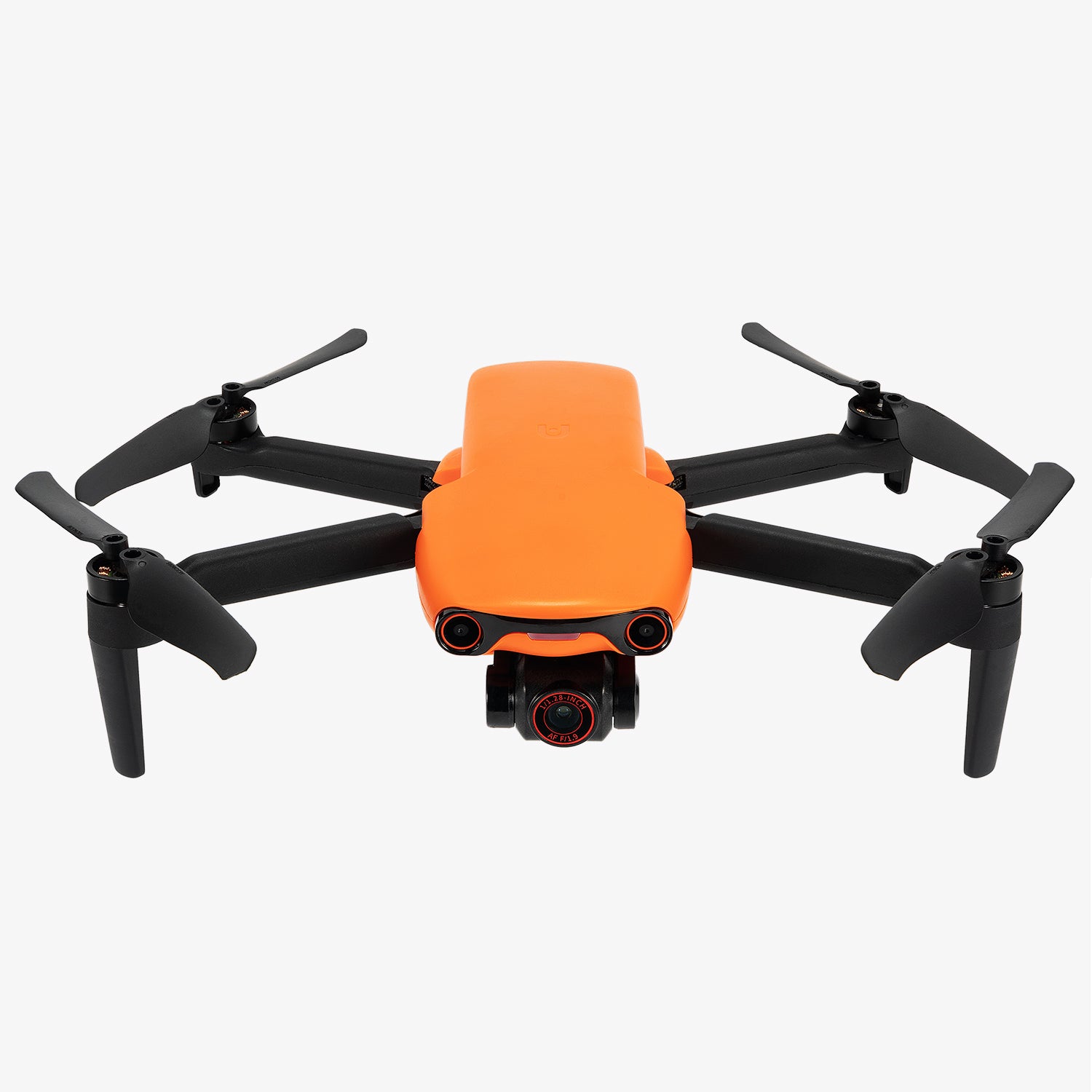Is it difficult to fly a drone? Not really. Choose a high-performance consumer drone that makes it easy for you to learn to fly and complete drone piloting in just a few steps.
The Autel EVO Nano+ is what we think is the best 4K consumer drone for beginners, with fantastic image quality, plenty of flight time, three-way obstacle avoidance, and no registration required.

Autel Robotics EVO Nano+ Drone Premium Bundle
$799.00 USD
Let’s take a look at how to fly the Autel EVO Nano+ to fully learn how to fly a drone.
We'll walk you through the do's and don'ts and safety guidelines for flying a drone, this includes a pre-flight checklist, beginner tips, an overview of controls and laws and regulations as well as some safety tips.
First pre-flight inspection of flying a drone
Whether a drone beginner or an experienced drone pilot, before taking off for the first time, he should check his drone and accessories and prepare it for flight.
1. Make sure the battery is charged
When you receive your new drone, its battery capacity is approximately one-quarter to one-half. Before starting your first drone operation, please fully charge your batteries, including spare batteries, so that Improve your flying skills with lots of practice.

2. Charge the remote control and smartphone
Your drone remote control and smartphone also need to be charged. The remote control without a screen will use the smartphone as the controller or screen. Please make sure your phone is also fully charged. Autel EVO II V3 series drones use Smart remote control, 6.4-inch or 7.9-inch large screen smart remote control, clearer viewing and brighter screen than mobile phone screen.
3. Pack the propeller guard and spare propeller
Even if a drone has obstacle avoidance capabilities, the propeller is still the most dangerous moving part of all drones. It is necessary for drone beginners to install protective covers for the propellers, and also bring your spare propellers with you when traveling.

View More: How Do I Install The EVO II Propeller Guard?
4. Find a wide, clean area
When flying your drone for the first time, please choose a wide and clean area and avoid flying around buildings, trees, and waters to ensure safe and smooth driving. Once you practice enough, you can try taking off your drone in more locations.
5. Check weather conditions and environment
The weather conditions and environment in which the drone flies have a great impact on the flight of the drone. Keeping your drone flying safely requires checking the weather and environment. Good flying conditions should be clear weather, high visibility, light wind, and away from crowds, animals and building interference.

View More: What Weather Is Best For Drone Flying?
6. Flight first flight pre-inspection
Before the drone officially flies, please conduct a pre-flight inspection. Keep the drone flying at eye level for about 10-15 seconds, listen for any abnormal sounds, whether the drone responds quickly and sensitively to remote control stick commands, and check whether there is a no-fly zone around it before continuing with your flight mission.
View More: How To Do EVO II Drone Pre-flight Preparation?
Learn how to use a drone remote or transmitter
Learning the controls of a drone is crucial to learning how to fly.
The drone controller basically uses joysticks and rollers to control the flight and shooting of the drone. Long-term practice will help you better understand the drone.
The Four Main Drone Controls:
- Pitch
- Throttle
- Roll
- Yaw
Let’s go over each control.

Pitch
To use the pitch, the right stick on the transmitter is pushed forwards or backwards. This will cause the drone to tilt, which results in movement forwards or backwards.
Throttle
Throttle gives the drone propellers power to get airborne. Once in the air, the throttle must be constantly engaged.
The left stick on the transmitter should be pushed forward to engage the throttle. Pull it backwards to disengage.
The throttle should not be completely disengaged until the drone is a couple of inches from the ground. If it’s disengaged sooner, it could become damaged.
Roll
The roll control will move the drone right or left. To use the roll, push the stick on the right of the transmitter either left or right.
The reason why it’s called a “roll” is because it actually rolls the drone.
Yaw
Yaw is what rotates the drone clockwise and counterclockwise.
To use the yaw, the left stick is pushed to the left or right.
Typically, yaw is used during continuous flight, at the same time as the throttle. By using yaw, circles and patterns can be made by the pilot. It’s helpful for photographers and videographers to follow objects that could change direction.
Know Your Drone: The Differences in Control
Drones use a transmitter, which is a handheld controller that allows you to pilot its flight patterns. By making adjustments using the joystick, the system sends signals to the drone telling it how to perform.
Transmitters have different functions and come in different sizes and shapes. However, some parts are common to every transmitter.

Right joystick
Pitch and roll are controlled by the right stick. It will move the drone backward/forward and left/right.
Left joystick
Throttle and yaw are controlled by the left joystick. It will adjust the flight height of the drone as well as move the drone clockwise or counterclockwise.
Beginners practice drone flying skills
Beginners can practice drone flying from the most basic take-off, landing, forward, backward, left, and right, and can also gradually transition to learning some beautiful drone flying skills.
- Fly the drone in a circle
- Fly the drone in a square pattern
- Hover the drone in place
- Fly at different altitudes
- Rotate and hover the drone
- Create two ground targets and land on each of them repeatedly
- Rotate the drone at different angles, fly it forwards/backwards and left/right until it becomes comfortable to fly it without it facing your direction
Drone Beginner Mode or Headless Mode Instructions
If you're still nervous about flying a drone for the first time, you can check to see if your drone has a headless mode or a beginner mode. These modes are specially created for beginners to quickly adapt to drone flying.
In headless mode, the drone will always move relative to the controller's position. This is very friendly to drone beginners. However, we recommend not flying in headless mode for too long as you may develop bad habits and forget the essentials of flying in normal mode.
Mid-to high-performance drones come with a beginner mode instead of a headless mode. This will limit the flying distance, flying height and speed of the drone and reduce the gain of the controls, helping drone beginners to slowly practice flying.
View More: Does the Autel EVO Drone Have a Headless Flight Mode?
Learn drone rules and regulations
Drones are flown for entertainment. But we still need to abide by the rules and regulations regarding operating drones and fly responsibly and safely.
Stay below 400 feet (maximum altitude allowed)
How high can a drone fly? The general rule set by the FAA aviation authority for the maximum altitude for drones is less than 400 feet. This will help avoid any possible conflicts with other aircraft such as helicopters and airplanes.
Don't fly over people
Flying drones over crowds of people is not allowed. Use common sense and make sure to avoid public events, sports venues, community gatherings or any place where people may gather.
Check your local community guide
Your city, county, or state may have its own set of regulations regarding drone flying. Please try to avoid violating any flight regulations.
Keep the drone within your line of sight
The drone should always be within your line of sight, which will help you deal with any emergencies.
Do not fly drones in no-fly zones
Usually there will be corresponding no-fly zones near the airport or some important government agencies and activity locations. Please do not drive in the no-fly zone. There will be corresponding prompts or electronic fences in the Autel drone remote control APP to prevent you from taking off.
Don't fly after dark
Never fly a drone after dark. On the one hand, drone beginners lack experience. On the other hand, it also brings potential danger to other manned aircraft or people. You must always turn on the lights when flying at night. Please consult your local aviation authority for more details.
In conclusion
As drone technology continues to evolve and drone flying becomes easier, check out these guides and tips on how to fly a drone to help you prepare for your first flight, have fun and truly master it plane flying.








